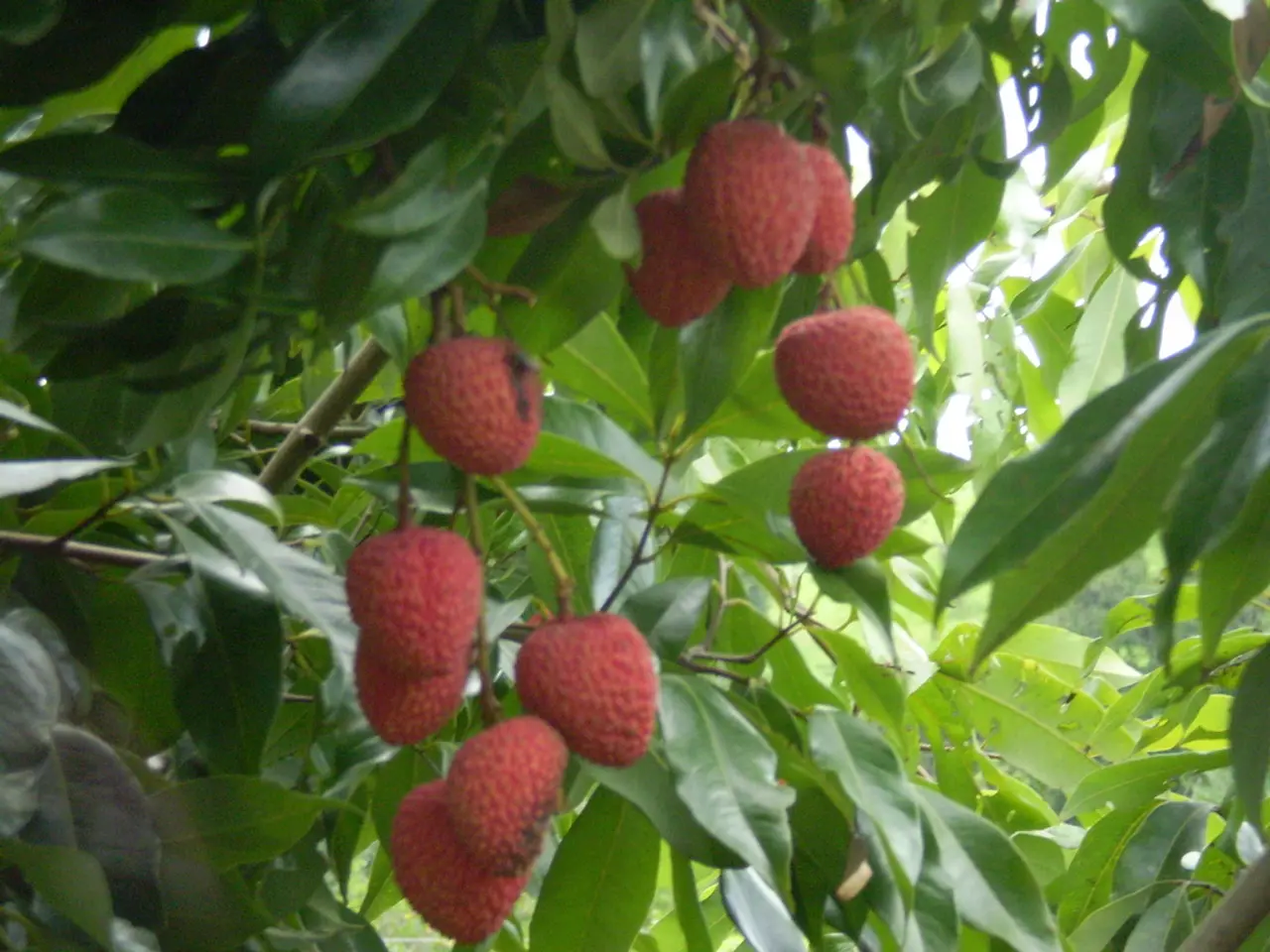Guide to Cultivating Strawberries: The Comprehensive Handbook
Growing Delicious Strawberries: A Comprehensive Guide
Strawberries are a delightful fruit that can be easily grown in your backyard. Here's a guide to help you grow these juicy berries successfully.
Growing from Seeds
- Extract seeds from fresh strawberries or buy seed packets. Cold stratify the seeds by placing them in a damp paper towel or moist sand inside a plastic bag and refrigerate for at least 4 weeks. This mimics winter and improves germination rates.
- After stratification, bring seeds to room temperature, then place them on moist soil or in a moist paper towel in a warm, humid environment until they sprout.
- Start seeds indoors in small pots or seed trays near a sunny window or under grow lights. Cover with plastic wrap or a dome to maintain humidity.
- Once seedlings have grown enough (a few weeks), transplant them outdoors in early spring when the threat of frost is low. Plant them in slightly acidic, well-drained soil with crowns just above the soil line, spacing plants about 12 inches apart.
Propagating Runner-Producing Types
For varieties producing runners (e.g., June-bearing, day-neutral), propagate by runners. Identify runners with daughter plants having at least two trifoliate leaves and root bumps. Cut runner tips with some stem intact, or place daughter plants in small pots with sandy loam soil while still attached to the runner, securing them to soil until roots develop. Once rooted, sever from the mother plant and transplant.
Planting Tips
- Plant crowns slightly above soil surface, with roots just below to avoid "J" rooting which can harm growth.
- Spacing and layout depend on the system used; for matted row systems, space mother plants about 2 feet apart and let runners fill in later.
- Remove flowers in the first year if using matted row system to promote runner and root establishment before fruiting in the second year.
- Use disease-resistant varieties where appropriate, especially in regions prone to anthracnose.
Caring for Your Strawberry Plants
- Strawberries require at least six hours of sun per day and may need a growing light.
- On average, six strawberry plants per person will yield a satisfying amount of strawberries.
- Strawberries that are exposed to the first hard autumn frost will be more productive come summer.
- Use a commercial 10-10-10 fertilizer or organic fertilizers like blood meal, fish meal, or alfalfa meal to fertilize strawberries.
- Strawberries need nitrogen in the spring and late fall.
- Mulching around strawberry plants with straw helps to retain water and prevent the fruits from sitting on bare soil.
- When picking strawberries, leave about a quarter of the stem attached, taking care not to bruise the flesh.
Harvesting and Maintenance
- Strawberries should be picked when they are completely red, as they won't continue to ripen after harvesting.
- After the last strawberries of the season, the plants' foliage should be pruned back to 3 to 4 inches (7.5 to 10cm) above the crown to enable the plants to put their energy to strengthening their roots and putting out new growth in time for next year.
- Remove the layer of mulch in early spring before applying a fresh, thin layer underneath the foliage.
- In climates with cold winters, it is best to winterize strawberries by applying mulch on top of the plants in late fall or early winter to protect them from extreme temperatures.
Growing Strawberries in Containers
When growing strawberries in containers, it is important to choose a container with plenty of drainage holes, and to use a blend of soil, homemade compost, and soilless media to promote drainage.
Pest Management
Strawberry plant pests can be minimized by clever companion planting and the use of organic control solutions. Companion plants like borage, thyme, dill, coriander, mint, sage, beans, garlic, onions, lettuce, spinach, and French marigolds can help deter pests, provide shade, serve as living mulch, and even improve flavor.
In conclusion, growing strawberries is a rewarding endeavour that can be achieved with the right care and attention. Whether you choose to grow them from seeds or runners, following these guidelines will help ensure a bountiful harvest of delicious strawberries.
[1] RHS. (2021). How to Grow Strawberries. Retrieved from https://www.rhs.org.uk/advice/profile?PID=562 [2] University of Illinois Extension. (2021). Growing Strawberries. Retrieved from https://extension.illinois.edu/gardenweb/articles/growing-strawberries/ [3] University of Maine Cooperative Extension. (2021). Strawberry Culture. Retrieved from https://extension.umaine.edu/publications/457/ [4] University of California Agriculture and Natural Resources. (2021). Strawberry Culture. Retrieved from https://ucanr.edu/sites/Strawberries/files/257131.pdf [5] University of Wisconsin-Madison. (2021). Strawberries. Retrieved from https://hort.extension.wisc.edu/articles/strawberries/ [6] Griffiths, M. (2021). Growing Strawberries. Retrieved from https://www.rhs.org.uk/advice/blogs/growing-strawberries
- Cultivating strawberries can be an enjoyable way to improve your home-and-garden lifestyle, as growing strawberries offers a fulfilling hobby and a bounty of fresh, delicious fruits.
- When planning your home-and-garden setup, consider integrating a strawberry patch into your lifestyle and find joy in the process of gardening with these delightful fruits.




